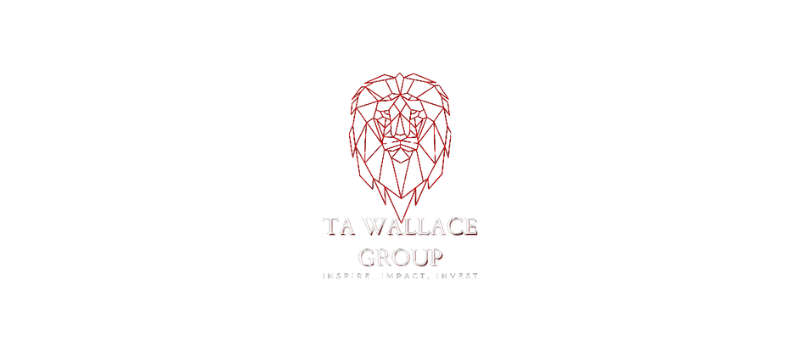The Three M’s of Success: How to Multiply, Maximize, and Magnify Your Impact

Success is often seen as an elusive goal, but what if it could be distilled into three simple principles? The “Three M’s”—Multiply, Maximize, and Magnify—offer a clear, actionable framework for achieving lasting impact in both personal and professional spheres. Whether you’re an entrepreneur building your dream venture, a business leader striving for operational excellence, or someone on a personal growth journey, mastering the Three M’s can help you unlock your full potential. This blog will walk you through the Three M’s of success, explore practical ways to apply each, and share inspiring examples of individuals who have used this framework to transform their lives. Ready to level up? Let’s get started. What Are the Three M’s of Success? At its core, the Three M’s framework is about amplifying your efforts and outcomes. Here’s what each “M” stands for: Each “M” builds upon the other, creating a compounding effect that accelerates your success. Now, let’s discuss how you can apply each principle in your life. How Can You Multiply Your Impact? Multiplying your impact means finding ways to extend your reach and output without necessarily expending more effort. It’s about working smarter, not harder, and utilizing resources that amplify your efforts. 1. Collaborate with Others Collaboration can create exponential results by pooling skills, ideas, and networks. Surround yourself with individuals who complement your strengths and share your vision. Example: Companies like Apple thrive on collaboration between teams. Designers, engineers, and marketers work closely to create seamless products that revolutionize entire industries. 2. Use Social Media and Networking Social media platforms and professional networks provide unprecedented opportunities to connect with like-minded individuals and showcase your brand or ideas to millions of people. Actionable Tip: LinkedIn isn’t just for job hunting—use it to build your professional network by sharing insights, joining discussions, and connecting with thought leaders in your industry. 3. Leverage Technology Advanced tools and automation can significantly reduce manual efforts, allowing you to focus on higher-level tasks. Tools in project management (like Trello or Asana), finance (like QuickBooks), and communication (like Slack) can boost team productivity. Success Strategy: Entrepreneurs like Elon Musk use cutting-edge technology—from AI to automation—to drive innovation and efficiency. 4. Delegate Tasks Recognizing that you can’t do everything alone is critical. Delegating responsibilities to capable team members frees you up to focus on strategic initiatives. Pro Tip: Avoid micromanaging. Delegate tasks with clear expectations and trust your team to deliver results. How Can You Maximize Your Impact? Maximizing is about getting the most out of your resources—be it skills, time, or capital. It’s a principle rooted in intentionality and efficiency. 1. Set Clear Goals and Priorities Clarity creates focus. Set SMART goals (Specific, Measurable, Achievable, Relevant, and Time-bound) to direct your efforts effectively. Example: Business magnate Warren Buffett famously advises focusing on your top five priorities and avoiding all distractions. 2. Continuously Learn and Improve To stay ahead, you must be willing to evolve. Treat learning as a lifelong process and seek growth opportunities. Actionable Step: Set aside 30 minutes daily to read industry blogs, research trends, or take an online course related to your field. 3. Focus on Your Strengths While acknowledging areas for improvement is important, doubling down on your strengths creates unparalleled efficiency and momentum. Expert Insight: Think about how Serena Williams won Grand Slam titles. She didn’t try to be good at everything; she mastered her powerful serve and athleticism. 4. Build Strong Relationships Fostering meaningful professional and personal relationships can lead to invaluable opportunities. Remember, you’re only as strong as your network. Quick Tip: Reach out to a mentor or re-establish a connection with someone who has positively influenced you in the past. A simple but genuine message can go a long way. How Can You Magnify Your Impact? Magnifying your impact takes things to the next level by leaving a lasting imprint on the people and communities around you. It’s about legacy and influence. 1. Be a Leader and Mentor Lead by example and inspire others to take action. Mentorship amplifies your impact by empowering others to carry your knowledge and influence forward. Why It Matters: Oprah Winfrey’s leadership and mentorship in media and philanthropy have created a ripple effect felt across generations. 2. Create a Positive and Inspiring Culture If you’re running a business or leading a team, your workplace culture should encourage creativity, inclusivity, and productivity. Example: Companies like Zappos are widely celebrated for fostering a happy and productive culture that translates into outstanding customer experiences. 3. Give Back to Your Community Whether donating time, money, or resources, actively contributing to your community enhances your impact beyond your personal or organizational goals. Actionable Advice: Set up a scholarship fund, volunteer regularly, or sponsor community events relevant to your mission. 4. Think Long-Term and Sustainable True success isn’t about quick wins; it’s about building something meaningful and enduring. Pro Tip: When creating a product or business, ask yourself how it contributes to a better future. Does it solve a real problem? Will it make a difference years down the line? What Are Some Examples of Successful Individuals Who Have Used the Three M’s? Many influential figures embody the Three M’s: These leaders achieved success not by chance but by strategically multiplying, maximizing, and magnifying their efforts. Take Action Today—Implement the Three M’s Success doesn’t happen overnight, but it becomes achievable when you apply the right strategies. By multiplying your efforts, maximizing your potential, and magnifying your influence, you can create an impact that goes beyond what you thought possible. Now it’s your turn. Take the first step toward implementing the Three M’s today. Ask yourself: Success is within your reach—but only if you act.
7 Powerful Ways to Transform Personal Tragedy into Your Greatest Triumph: A Life-Changing Guide to Resilience

Life has a way of throwing unexpected challenges our way. Whether it’s the loss of a loved one, a career setback, health issues, or personal hardships, these moments can either break us or become the foundation for extraordinary growth. In this comprehensive guide, we’ll explore proven strategies for turning life’s darkest moments into stepping stones toward success, backed by real stories and research-based approaches. The Science Behind Resilience: Understanding Your Inner Strength Recent studies from the American Psychological Association reveal that approximately 70% of people experience significant personal growth following traumatic events, a phenomenon known as post-traumatic growth. This remarkable statistic demonstrates our innate capacity for resilience and transformation. When we face adversity, our brains actually undergo notable changes. Neuroscientific research conducted at Stanford University shows that experiencing and overcoming challenges can strengthen neural pathways associated with emotional regulation and problem-solving abilities. This biological adaptation helps explain why some of history’s most inspiring success stories emerged from periods of intense personal struggle. The Seven Fundamental Principles of Transforming Tragedy into Triumph 1. Embrace the Power of Perspective Shifting The way we interpret our experiences significantly influences their impact on our lives. Research from Harvard Medical School indicates that individuals who can reframe negative experiences as opportunities for growth show markedly better outcomes in both mental health and personal achievement. Consider Sarah Martinez, a former corporate executive who lost everything in the 2008 financial crisis. Rather than viewing this as an endpoint, she saw it as an opportunity to pursue her long-forgotten passion for educational technology. Today, her educational platform serves over 100,000 students worldwide. 2. Develop a Growth-Oriented Mindset Stanford psychologist Carol Dweck’s research demonstrates that people with a growth mindset—those who believe challenges are opportunities to learn and improve—consistently outperform those with fixed mindsets in recovery from setbacks. To cultivate this mindset: 3. Build Your Support Network The Harvard Study of Adult Development, spanning over 80 years, conclusively shows that strong social connections are crucial for resilience and recovery. People with robust support networks are three times more likely to successfully navigate major life challenges. 4. Create Meaningful Goals Psychological studies indicate that having clear, purposeful goals during difficult times can increase resilience by up to 40%. These goals provide direction and meaning when everything else seems uncertain. Consider breaking down your journey into: 5. Practice Active Self-Compassion Research from the University of Texas shows that individuals who practice self-compassion during difficult times experience 65% faster emotional recovery rates compared to those who maintain self-critical attitudes. 6. Engage in Purposeful Action Taking concrete steps, even small ones, can significantly impact our recovery trajectory. A study published in the Journal of Positive Psychology found that engaging in purposeful activities during challenging times can reduce depression symptoms by up to 50%. 7. Share Your Story The act of sharing our experiences has both personal and communal benefits. Research shows that individuals who constructively share their stories of overcoming adversity experience better long-term psychological outcomes and often inspire others facing similar challenges. Common Questions About Overcoming Tragedy How long does it typically take to recover from a major setback? Recovery timelines vary significantly among individuals. However, research suggests that most people begin to see meaningful progress within 6-18 months of actively working through their challenges. The key is to focus on consistent progress rather than speed. What role does professional help play in transformation? Studies show that individuals who seek professional guidance during difficult times are 40% more likely to experience positive transformation compared to those who don’t. Professional support can provide structured approaches and objective perspectives that accelerate growth. Practical Implementation Strategies To effectively apply these principles in your life: Conclusion Transforming tragedy into triumph isn’t just about survival—it’s about emerging stronger, wiser, and more capable than before. By implementing these research-backed strategies and maintaining a growth-oriented mindset, you can navigate life’s challenges while creating meaningful positive change. Remember, every great success story includes chapters of struggle. Your current challenges may well be the foundation for your greatest achievements.
Leadership Styles: How to Find the Perfect Fit for Your Organization

Leadership is one of the most defining factors behind a thriving organization. The way leaders inspire, guide, and support their teams significantly impacts overall performance and workplace culture. However, what works for one company may completely misfire in another. This is where understanding leadership styles becomes crucial. From transformational leadership that drives innovation to servant leadership that prioritizes relationships, choosing the right approach can mean the difference between reaching new heights or struggling with disengagement. But how do you determine which leadership style fits your organization best? This blog will walk you through different leadership styles, answer some frequently asked questions, and provide practical tips to help you find the perfect match for your unique needs. What Are Leadership Styles? Leadership styles refer to the distinct ways in which a leader manages, motivates, and directs their team. Essentially, it’s the “how” behind a leader’s ability to reach organizational goals while balancing team needs. No one style fits all—it often depends on company objectives, team dynamics, and industry demands. Why Do Leadership Styles Matter? Great leadership isn’t just about climbing the corporate ladder. It’s about driving organizational success, fostering innovation, and creating an environment where employees thrive. Leaders who adapt their style to suit their team and goals often see higher engagement levels, increased productivity, and stronger relationships within their organizations. For example, a recent study found that 81% of employees felt engaged in roles where their leaders demonstrated a clear, supportive style compared to only 45% who worked under less adaptable leadership. But with so many styles out there, it’s easy to feel overwhelmed. Below, we’ll break down common leadership styles and help you pinpoint the best fit for your organization. Exploring Common Leadership Styles 1. Transformational Leadership Transformational leaders inspire innovation. They focus on growth, motivate teams with a compelling vision, and often challenge employees to push their boundaries. This style is especially beneficial in fast-changing industries like tech or marketing. Pros: Drives change, fosters creativity, builds a sense of purpose.Challenges: May overwhelm teams if change initiatives are excessive. 2. Democratic Leadership This style involves team members in decision-making. Democratic leaders encourage collaboration and place high value on feedback and active participation. Pros: Boosts employee morale, fosters trust, and promotes teamwork.Challenges: Decision-making can become slow as it involves gathering diverse opinions. 3. Autocratic Leadership Autocratic leaders make decisions unilaterally to maintain control. While sometimes seen as rigid, this approach works well for high-stakes industries like emergency response or manufacturing. Pros: Quick decisions, clear direction, appropriate in crisis situations.Challenges: Reduces employee autonomy, leading to potential disengagement over time. 4. Servant Leadership Servant leaders prioritize the well-being and development of their team over personal ambitions. This style is commonly used in organizations with a strong emphasis on culture and employee satisfaction. Pros: Builds loyalty, increases engagement, and fosters positive culture.Challenges: May create challenges when tough decisions are necessary. 5. Laissez-Faire Leadership Laissez-faire leaders take a hands-off approach, letting employees manage their own tasks. It works exceptionally well with highly skilled and self-motivated teams. Pros: Empowers employees, promotes innovation, and maximizes autonomy.Challenges: Risk of disorganization and lack of guidance. FAQ About Leadership Styles Which leadership style is most effective? The “most effective” style largely depends on your situation. For instance, transformational leadership may work well for fostering innovation, while servant leadership could strengthen employee satisfaction in a purpose-driven startup. Can leaders switch between styles? Absolutely. Adaptive leadership is often the best approach. A study shows that success rates for leaders who tailored their management approach to match their team’s personality and goals were 90% higher than those who didn’t. Adaptability enables leaders to use the right tools for specific scenarios. How do I find my leadership style? Start by evaluating your organization’s current needs. Is your team struggling with change? A transformational approach might help. Do they need autonomy? A laissez-faire style could be beneficial. Seeking feedback from colleagues also provides valuable insight into how your leadership approach is perceived. Can a poor leadership style derail an organization? Yes. Rigid, unaligned leadership often leads to disengagement, poor morale, and high turnover. Statistics reveal 50% of employees have left jobs due to a poor relationship with their manager. Finding alignment is key. How to Find the Right Fit Choosing the right leadership style starts with self-awareness and a deep understanding of your organization’s goals and culture. Consider the following steps to determine the best match for your needs. Actionable Takeaways Conclusion Great leadership is about intentionality and alignment. Whether you’re leading a team of 10 or heading an enterprise, the perfect leadership style is one that suits your organizational culture and team needs. By being adaptable, transparent, and open to learning, leaders can create an environment where both people and businesses thrive. Remember, leadership success comes not just from following a set framework but from building relationships, inspiring trust, and staying committed to impactful growth.
The Power of Engagement: How to Ignite Enthusiasm in Your Team

Keeping a team motivated and engaged can be challenging, especially in a fast-paced business environment where deadlines and pressures abound. Yet, research consistently shows that engaged employees are not only more productive but also significantly more committed to the success of their organization. A Gallup study revealed that businesses with highly engaged teams are 21% more profitable and experience 59% less turnover than their disengaged counterparts. But the question remains—how can you foster engagement and enthusiasm within your team? This blog will guide you through the core components of employee engagement, its benefits, and actionable steps you can take to create a thriving, motivated workplace. What Is Engagement? Employee engagement extends beyond mere job satisfaction—it represents an employee’s emotional commitment to their organization and its objectives. Research consistently shows that engaged employees are more likely to exceed expectations in their roles, driven by a strong connection to the company’s mission and values. This level of commitment not only enhances individual performance but also contributes to overall organizational success. Understanding and fostering employee engagement is essential for building a thriving, purpose-driven workplace. Why Is Engagement Important in the Workplace? An engaged workforce is critical to organizational success, influencing key business outcomes such as productivity, innovation, and customer satisfaction. Research consistently shows that engaged teams collaborate more effectively, resolve problems faster, and demonstrate greater resilience in the face of challenges. By fostering engagement, organizations can unlock higher performance levels and build teams that are better equipped to adapt and thrive in dynamic environments. What Are the Different Types of Engagement? Employee engagement can manifest in different forms: How to Measure Engagement in Your Team To foster engagement, it’s essential to first understand the current level of engagement within your team. Here are some effective methods for obtaining insights: What Are the Benefits of Having an Engaged Team? The rewards of building an engaged workforce go far beyond operational efficiency. Here’s how engagement benefits the workplace: How to Ignite Enthusiasm in Your Team 1. Communicate Effectively Clear, open communication builds trust within a team. Keep your team informed of goals, challenges, and changes, and be transparent in decision-making processes. Simon Sinek, leadership expert, says it best: “Communication is not about sharing information. It is about creating understanding.” 2. Set Clear Goals and Expectations Ambiguity breeds confusion. Help your team stay goal-oriented by setting achievable and measurable objectives. Regularly communicate how individual contributions are aligned with larger company goals. 3. Provide Opportunities for Growth and Development Encourage professional development through workshops, mentorship, and training programs. Empower your employees to develop new skills that benefit both their career growth and organizational success. 4. Recognize and Reward Achievements Research from Gallup reveals that employees are 4.6 times more likely to feel engaged when their work is recognized. Implementing structured recognition programs, such as “Employee of the Month” initiatives or real-time peer-to-peer acknowledgments, can significantly enhance workplace morale. These programs provide employees with meaningful feedback, fostering a stronger sense of connection and motivation. 5. Foster a Positive Work Environment A positive workplace thrives on inclusivity, psychological safety, and mutual respect—key factors supported by extensive organizational research. Studies show that inclusive environments increase employee engagement by up to 17% and reduce turnover by 50%. To foster this, implement structured team-building activities and recognize cultural celebrations, which have been shown to improve feelings of belonging and camaraderie among team members. By creating opportunities for meaningful connection, you empower your team to collaborate more effectively and contribute to a supportive, high-performing work culture. How to Maintain Engagement in Your Team Once you’ve ignited enthusiasm, maintaining that momentum is key. Here’s how: 1. Regularly Check in with Your Team Members Make time for consistent one-on-ones to understand how employees feel about their roles and responsibilities. Brené Brown highlights the importance of empathy in leadership, stressing that “connection is why we’re here.” 2. Encourage Open Communication and Feedback Establish channels for employees to share their concerns, ideas, and feedback freely. Creating a safe space for dialogue fosters mutual respect and trust. 3. Continuously Provide Opportunities for Growth and Development Development isn’t a one-time event. Encourage ongoing skill development tailored to your employees’ aspirations and the company’s needs. 4. Celebrate Successes and Milestones Acknowledge both individual and team accomplishments, no matter how small. Celebrating wins—even minor ones—reinforces a culture of appreciation. 5. Address and Resolve Conflicts Promptly Conflict within teams is natural, but it’s essential to tackle issues early on. Use conflict resolution strategies to ensure accountability and fairness while restoring harmony. What Are the Consequences of a Disengaged Team? The flip side of engagement can be costly: Build an Engaged and Enthusiastic Team Today Engagement is not just a buzzword; it’s a critical measure of your team’s overall health and potential for success. By fostering open communication, setting clear goals, and recognizing achievements, you create a culture where enthusiasm and motivation thrive. Remember, engaged teams aren’t just high-performing—they’re also happier, more fulfilled, and deeply committed to achieving shared goals. Looking for more ways to supercharge your team’s engagement? Check out our Team Building Strategies and Leadership Development Tips for actionable insights. With the strategies in this blog, you hold the key to transforming your team dynamics and enhancing workplace productivity. Ignite enthusiasm today—it starts with your leadership.

